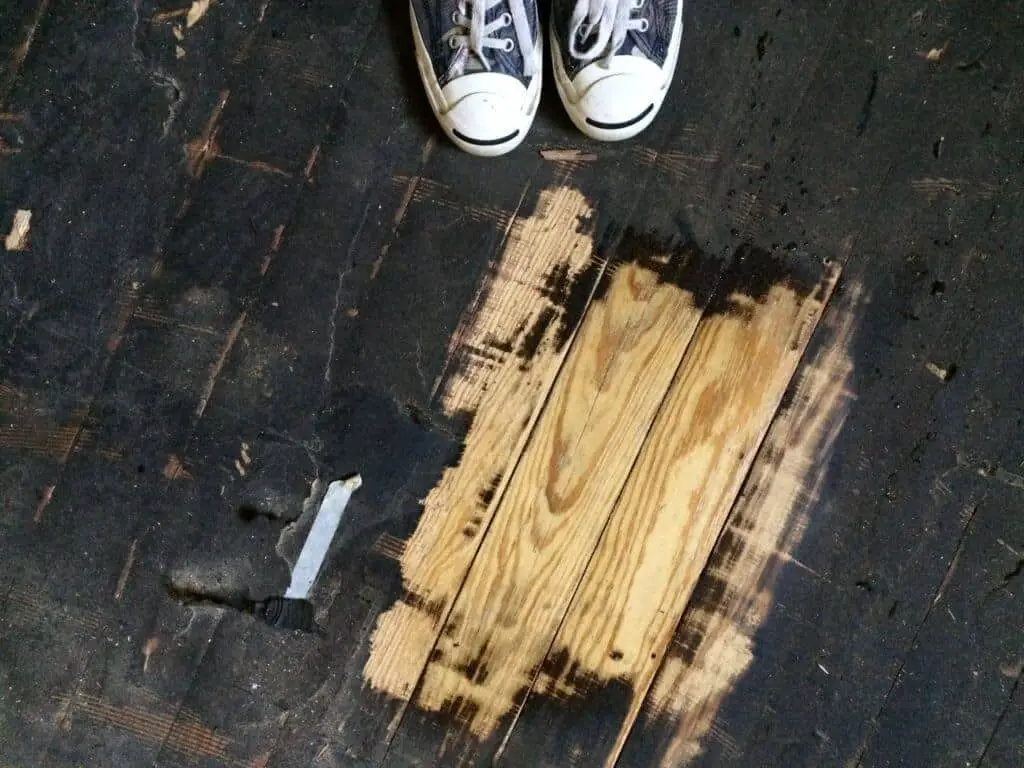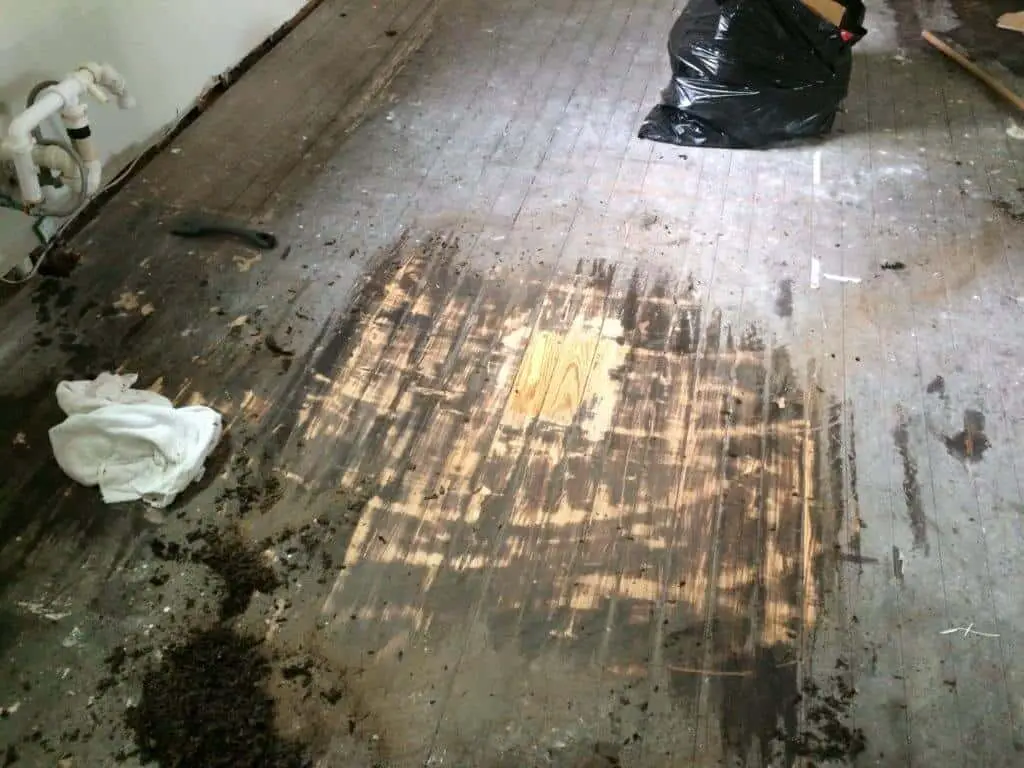Tar paper is quite a common moisture barrier material installed underneath a variety of floor materials, such as hardwood flooring installed over concrete surfaces.
If the tar paper residue doesn’t contain asbestos, there are several methods on how to remove tar paper from wood floor.
In the case of a previous layer of wood flooring that has had a layer of tar paper put down on top of it and then another layer of hardwood flooring installed above, the tar paper will naturally bond to the first layer.
To remove black tar from wood floor, you can make use of a putty knife or a paint stripper. Sanding and steaming as also effective alternative methods on how to remove black tar from wood floor.
First, a word of caution, prior to the 1980s tar paper and roofing felt often contained asbestos, so it’s important to have the material tested before attempting to remove it.
If the material tests positive for asbestos, your best bet is to either leave it alone and cover over it with new flooring or have the material professionally removed by an asbestos remediation company.
How to Remove Tar Paper From Wood Floor
Table of Contents
Solvent
You can try using a solvent to dissolve the asphalt residue from the tar paper. Start by using mineral spirits, apply it to the floor, allow time for it to work, then scrape off the residue. If mineral spirits don’t do the trick, try lacquer thinner.
Read: Easy homemade floor cleaner
Make sure the floor is dried thoroughly before sanding or finishing. Both solvents are very flammable and require lots of ventilation, rubber gloves, eye protection, and proper respirator.
Paint Stripper
If the above methods do not fix uneven stains on the hardwood floor, you may have to resort to a chemical paint stripper. The same safety guidelines and processes for solvents apply to paint stripper as well.
Putty Knife
The putty knife is your tool of choice when removing tar paper from a hardwood surface. And if the layer of tar paper hasn’t bonded completely with the surface of the wood, you can use the putty knife to scrape the tar paper off.
The sections of tar paper should come free by hand, but there will be areas where you will have to scrape with the knife to cut the paper away from the surface.
Steaming
Steamers can be used in the same way to help heat up the tar paper and any of the residue that has bonded with the face of the hardwood floor.
You may be required to make multiple passes with the steam machine, but the point is to dampen and heat up the tar paper.
When tar paper gets heated up, it is like butter in that it softens and becomes less sticky and more manageable, eventually allowing for removal with the putty knife.
Read: Best steam cleaner Review
Use a steamer with the right attachment and you’re good to with removing tar paper on your wood floor.
Sanding
Some sections may have a little extra adhesive that the steamer and the putty knife can’t remove. In such cases, you will have to sand the area to get the tar off the wood.
The tar paper may leave behind a thin layer of dark stain on top of the surface of the hardwood that needs to be sanded off so you can refinish the floor.
A big, two-handed sanding machine is the best bet, but you can also use a belt sander to help you get into corners. Use 80-grit paper to start with and then smooth things down with a grit of 150 or more
Adhesive-backed Tar Paper
Some brands of tar paper are self-adhering and have an asphalt- or tar-based adhesive used on the back to put them in place.
If you come across this brand, you should not sand it, as it can contain asbestos, the only option is to use a wet strip method and hire out the project to professionals.
Wet stripping is a very complicated and time-consuming task that involves working with chemicals. A special type of stripping solution specially designed to eat away at tar- and asphalt-based adhesives are applied.
Allow the solution to sit on the tar paper for some time (based on manufacturer instructions), a floor machine with a stripping pad is used to slurry the surface into a melted mass of goo. That is vacuumed up with a wet vac.
An Easy “Recipe” for Removing Tar Paper From Wood Floor
Things You’ll Need
- Floor scraper
- Heat gun
- Water
- Vinegar
- Rags
- Flooring solvents
- Orbital or drum sander
Step 1
Mix one equal part vinegar to three equal parts of water in a large bowl or bucket. Apply this mixture to your floor using a clean rag and allow it to soak into the tar paper for several hours.
Step 2
Using a floor scraper, scrape the wet tar paper. Experiment with different angles and sizes of scrapers, taking care not to gouge the floor.
Step 3
Spray the tar paper still remaining on the floor with a heat gun to help loosen the adhesive. Try to apply only a small amount of heat at first to avoid potential warping or damage to the floor.
As the tar paper and adhesive begin to warm up, try to remove them using your scraper.
Step 4
Apply a commercial solvent such as mineral spirits to any stubborn sections that you can’t remove.
Allow these solutions to sit in place for several hours so they can thoroughly penetrate the adhesive. The rooms should be well-ventilated when working with these materials.
Step 5
Try scraping away the remaining tar paper and adhesive. Make use of your heat gun as needed to further loosen stubborn materials.
Step 6
Use an industrial paint scrapper to remove tar paper. These types of solvents should be the last resort, as they are highly flammable and can pose health risks.
Ensure to keep the room well-ventilated and consider wearing a respirator while you work.
Step 7
You can then sand the floor using an orbital sander to smooth and even out the surface. Wipe the floor and apply a stain or seal to refinish the wood.
Conclusion
That is basically everything you need to know on how to remove tar paper from wood floor. Good luck with your project. Have you removed tar paper from your wood floor before?

